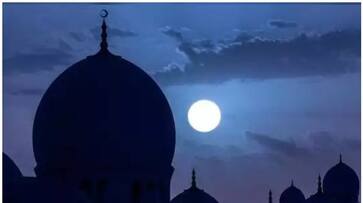Crescent moon of Shawwal won't be sighted by naked eye tonight, claims IAC
The sighting of the Eid Al Fitr crescent on the evening of Thursday, April 20, 2023, is uncertain at the moment, according to astronomers.

The Shawwal crescent moon cannot be seen with the naked eye in the Arab and Islamic worlds today, Thursday, April 20, according to a group of 25 astronomers from 13 Arab nations. The sighting of the Eid Al Fitr crescent on the evening of Thursday, April 20, 2023, is uncertain at the moment, according to astronomers.
The International Astronomy Centre in a statement pointed out that: "It should be noted that this statement is not intended to determine the exact date of Eid Al Fitr, as it is influenced by a variety of factors, including both jurisprudential and scientific considerations. The purpose of this statement is to provide some scientific clarifications regarding the issue of the crescent sighting."
International Astronomy Centre statement reads, " It is important to note that the issue of crescent sighting has been a topic of discussion among our esteemed scholars, and our Muslim ancestors established several criteria for sighting the crescent through practical observations. These standards are still rigorously followed today and are known for their accuracy in determining the possibility of seeing the crescent with the naked eye.
In fact, all previous standards, old and new, show that seeing the crescent on Thursday is not possible with the naked eye from the Arab world. This expectation is not an opinion of a person or a party, but rather it is a consensus of specialists.
Returning to the crescent on Thursday, April 20, let us look at its situation in some Arab and Islamic cities. At sunset: In Jakarta, the moon is 2.7 degrees from the sun (the internationally agreed limit for Danjeon is 6 degrees). In Abu Dhabi, it is 4.7 degrees from the sun. And in Mecca, it is 5.1 degrees away from the sun. In Jerusalem, the moon is 5.4 degrees away from the sun. In Cairo, the moon is 5.5 degrees away from the sun. In Dakar (Senegal), the moon is 8.0 degrees away from the sun, and it can be seen with instruments.
In view of all the scientific standards considered for the crescent and published in peer-reviewed periodicals, we would like to point out that seeing the crescent is not possible with the naked eye in the Arab or Islamic world, and is not even possible using telescopes in most of them, and most of them are less than the 'Dangon' limit.
As for the countries that are satisfied with the setting of the moon after the sun mathematically and do not require seeing the crescent or are satisfied with the possibility of seeing from anywhere in the world that shares with them at night, it is perfectly correct that Eid Al Fitr be on Friday, April 21. As for countries that require local (correct) vision only with the naked eye or countries located in Asia that accept local vision with a telescope, it is assumed that the number of Ramadan will be 30 days and that Eid Al Fitr will be on Saturday, April 22. This, and announcing the beginnings of the Hijri months is, of course, the prerogative of the legal authorities in Islamic countries."
 subscribe to Asianet Newsable WhatsApp channel by clicking here.
subscribe to Asianet Newsable WhatsApp channel by clicking here.














